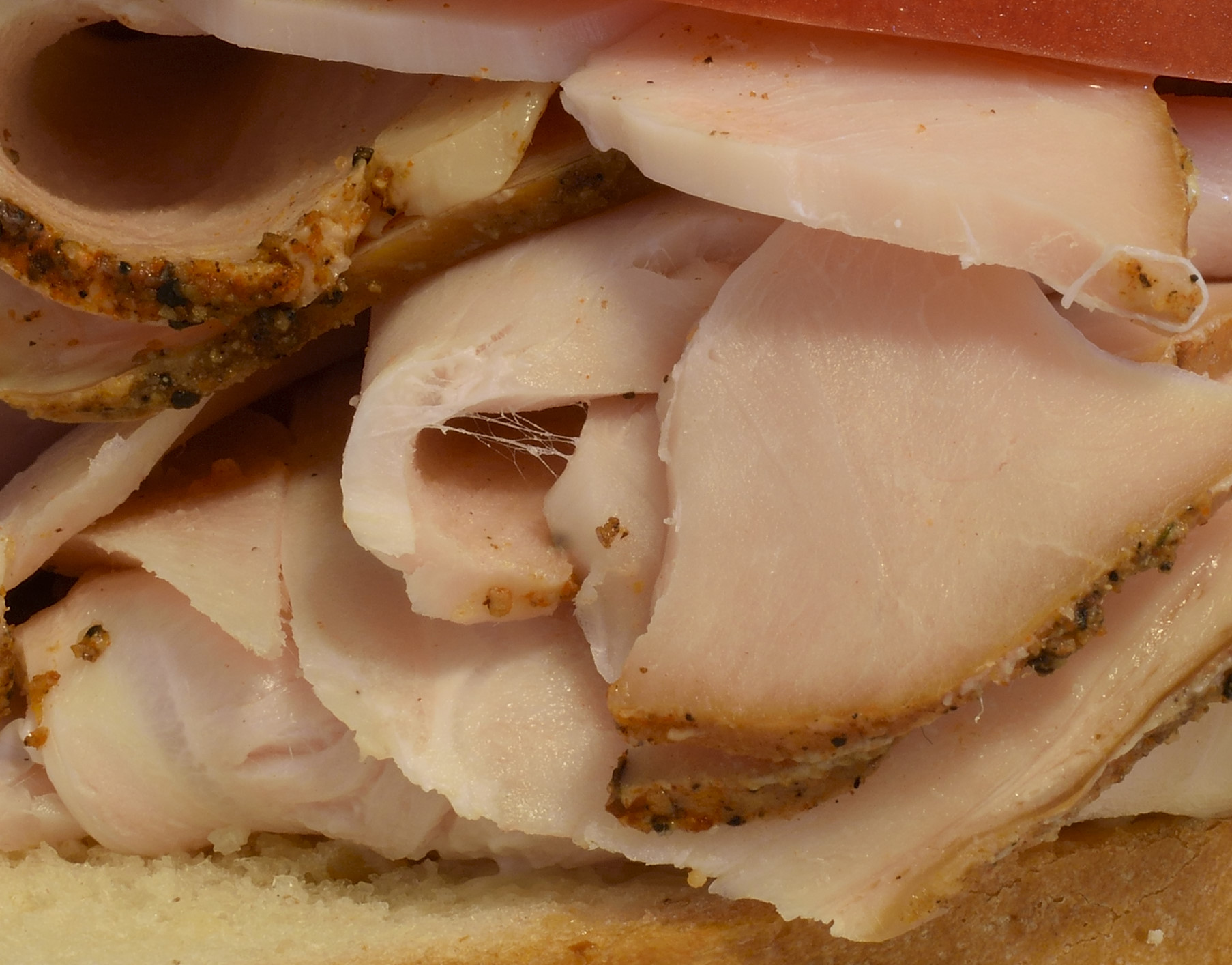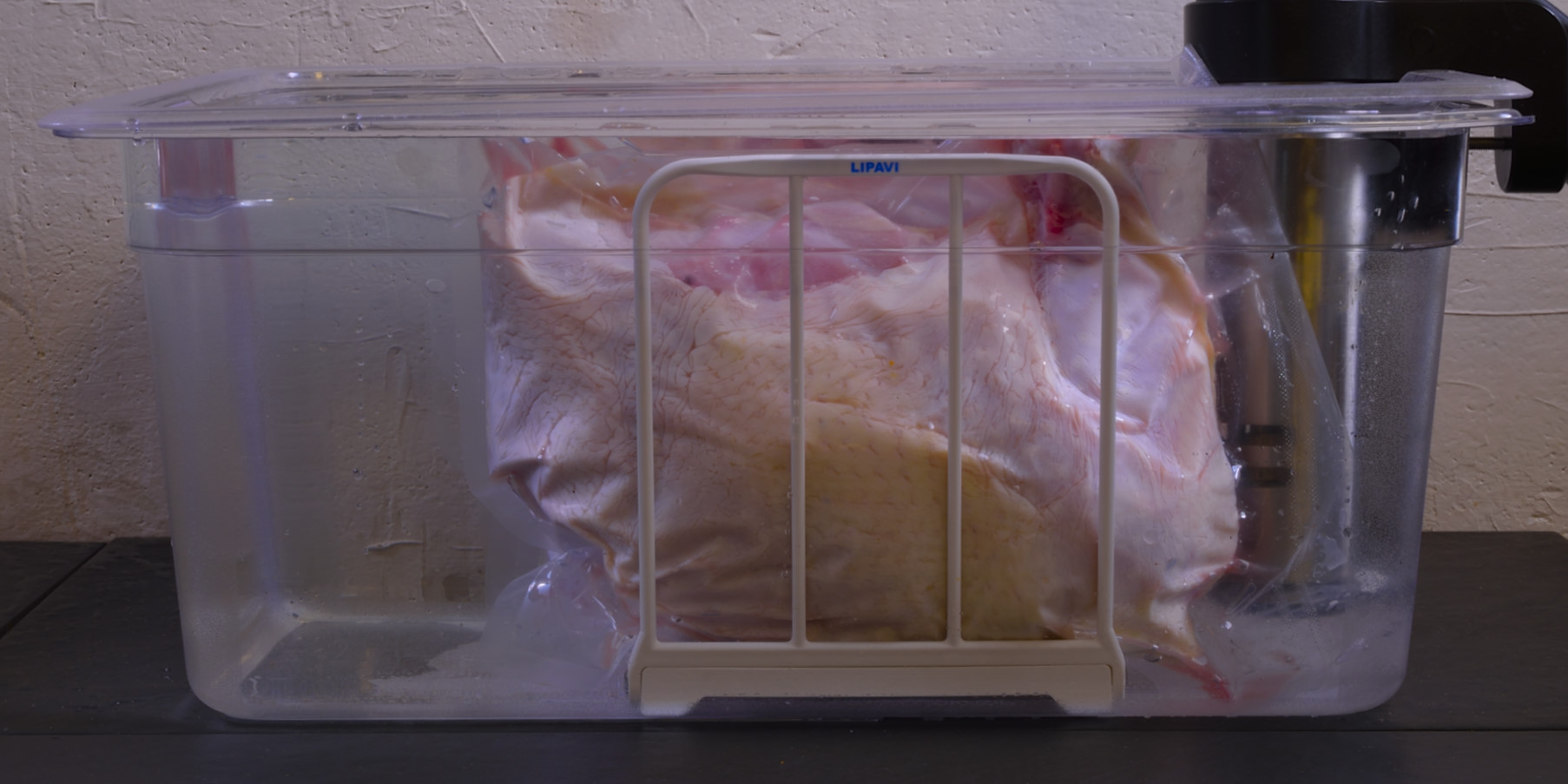Sous-B-Q: Smoked Turkey Breast, 2021
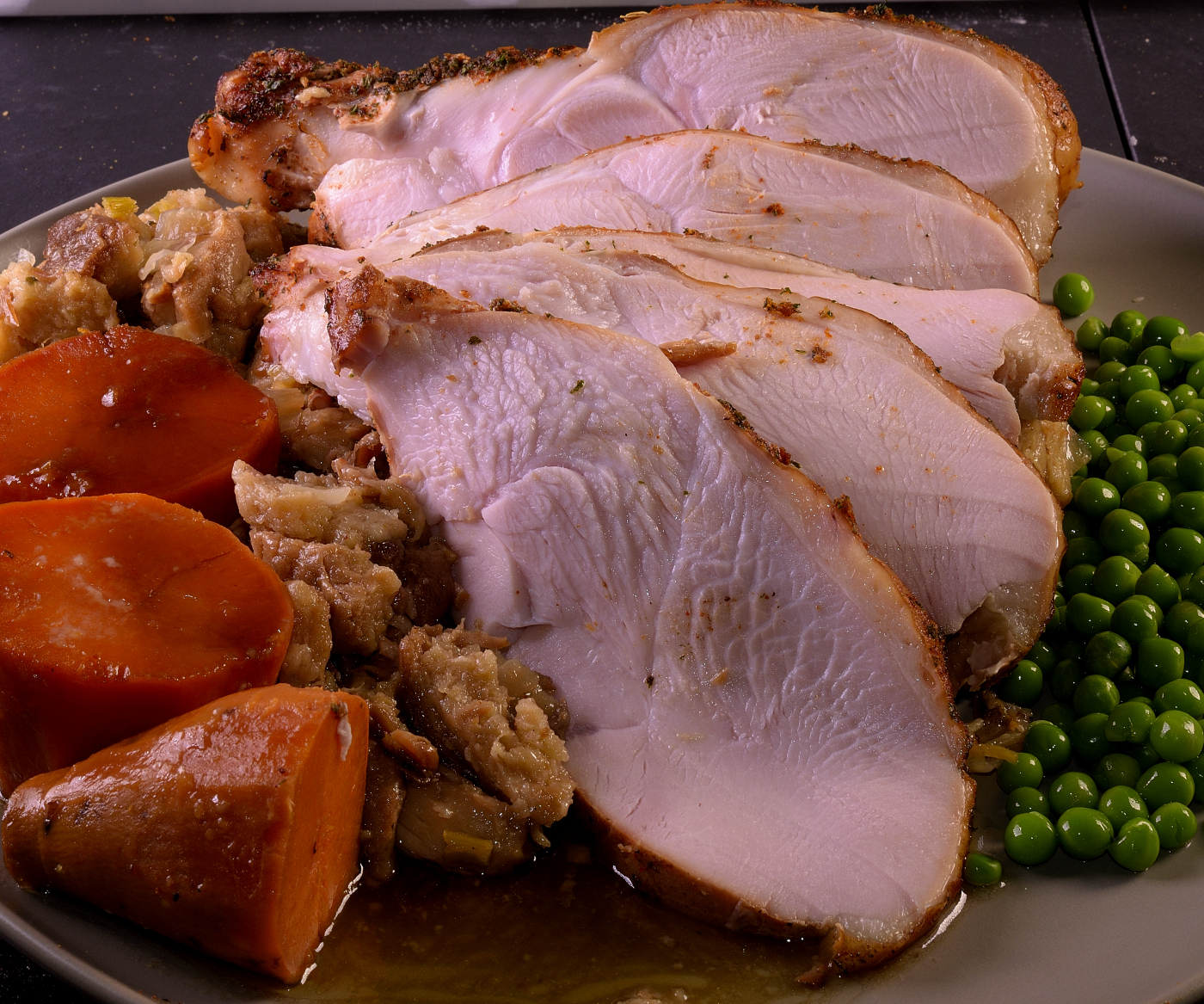
About
The synergy of sous vide processing and hot smoking creates results unachievable by any other method.
Ingredients
Turkey breasts, 1 each, 3+ lbs/1.5+ Kg each.
Egg white, 1 each, mixed with 1 oz cold water.
One of our dedicated seasonings, linked HERE. (or your preference).
Vegetable oil, approximately 2 oz/60 ml.
Optional components
Equipment requirements
Immersion circulator, portable or stationary.
Heat rated Lipavi container, minimum of 2 gallons/8 liters.
Lipavi L10 rack or larger.
Heat rated sous vide bags.
Pellet smoker (or your preference)/home oven.
Infrared thermometer.
Instructions
Serves 3+ Level of difficulty 2.5
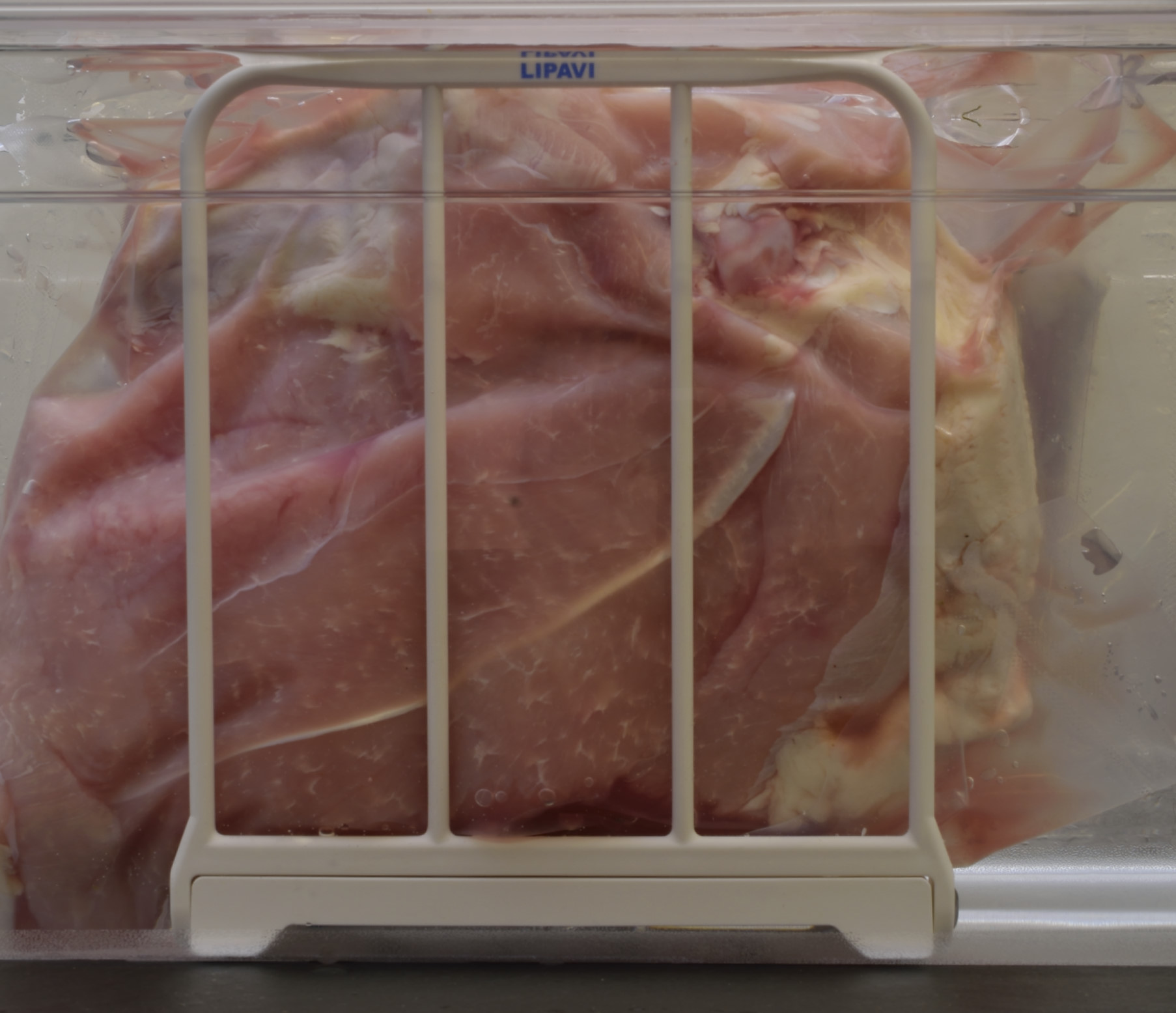 Preheat your sous vide bath to 135 F/57 C for a processing interval of 6 hours. For a detailed explanation of how to remove the bones from a raw turkey breast, visit HERE. To make turkey gravy from the bones visit HERE.
Preheat your sous vide bath to 135 F/57 C for a processing interval of 6 hours. For a detailed explanation of how to remove the bones from a raw turkey breast, visit HERE. To make turkey gravy from the bones visit HERE. Sous Vide Procedure:
Vacuum seal the individual turkey breast(s) in heat rated plastic bags. Sous vide process the packages for the interval listed above. Cold shock the sealed package in iced water until it achieves 70 F/21 C. Refrigerate at 40 F/4 C. As long as the seal is not broken, the turkey can remain in this state in the refrigerator for at least two weeks.Smoking the turkey:
For best results, preheat your smoker to approximately 180 F/82 C. The higher the temperature, the greater the eventual loss of moisture. Remove the turkey breast from the bag and harvest the juices.
Remove the turkey breast from the bag and harvest the juices. 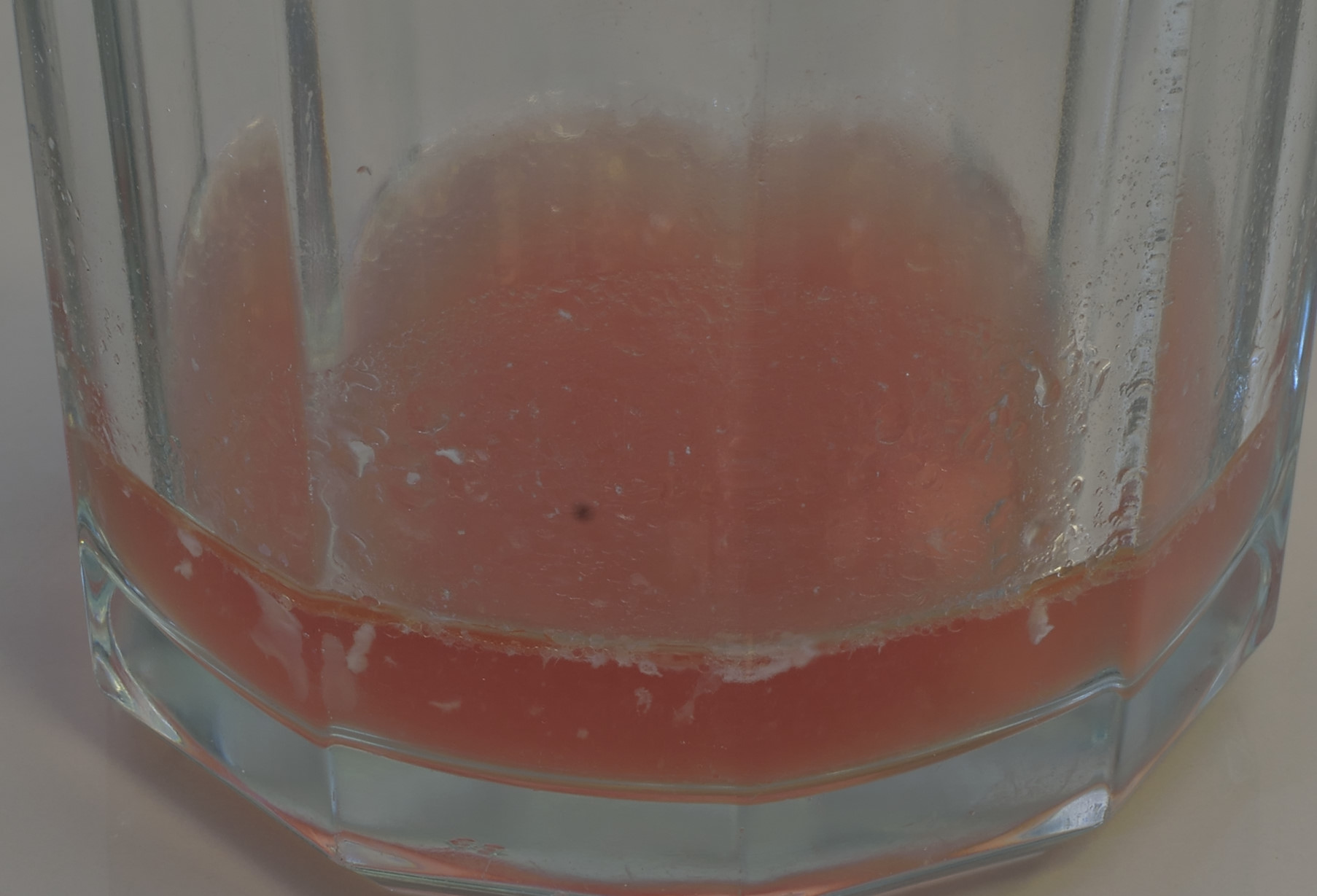 Set the juices aside for clarification as explained HERE. Cooking a turkey breast by any other conventional means will result in a weight loss of at least 25%. This is barely 4 oz coming from a 4 lb breast.
Set the juices aside for clarification as explained HERE. Cooking a turkey breast by any other conventional means will result in a weight loss of at least 25%. This is barely 4 oz coming from a 4 lb breast. 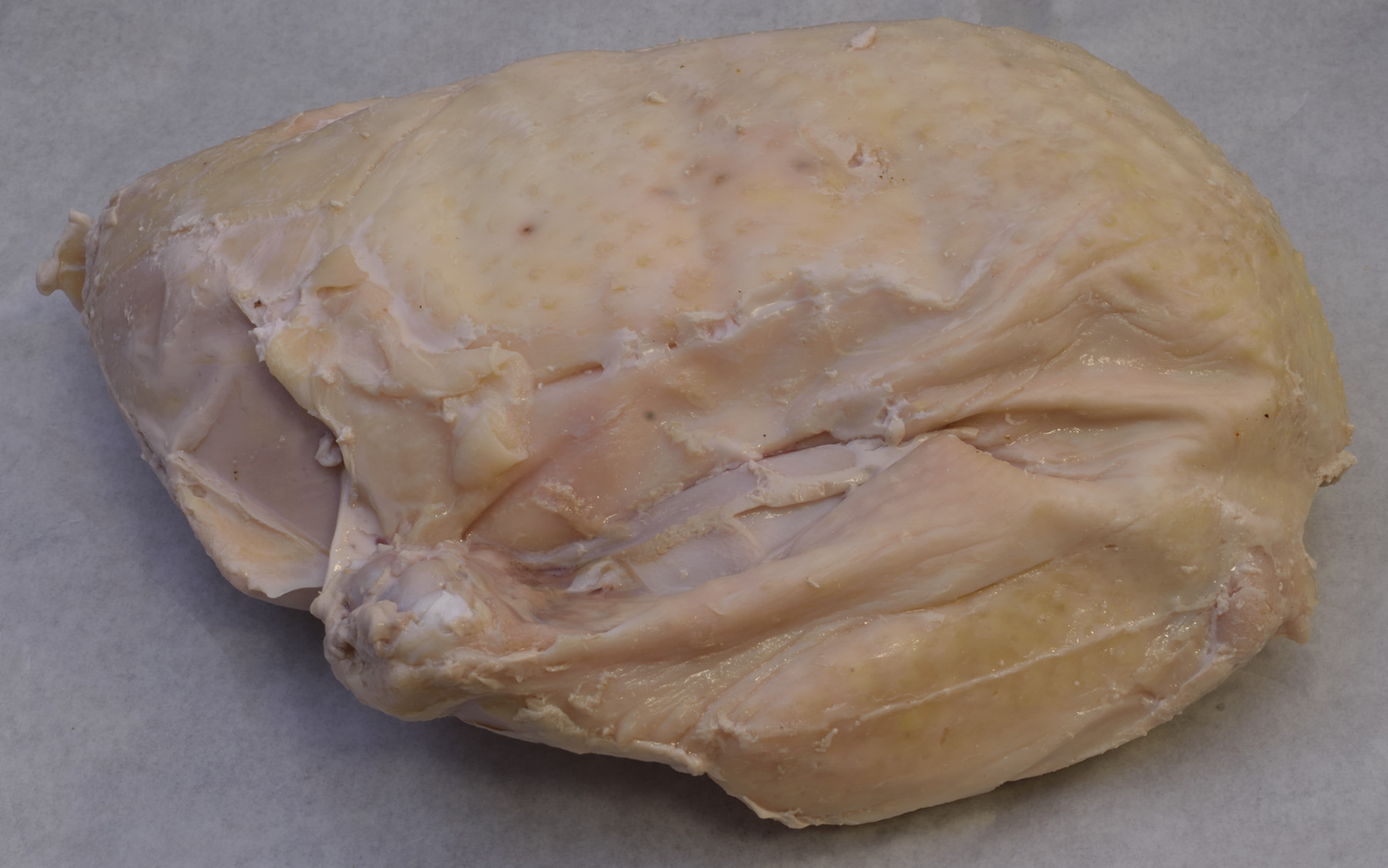 Pat the surface dry with a clean towel (or a paper towel).
Pat the surface dry with a clean towel (or a paper towel). 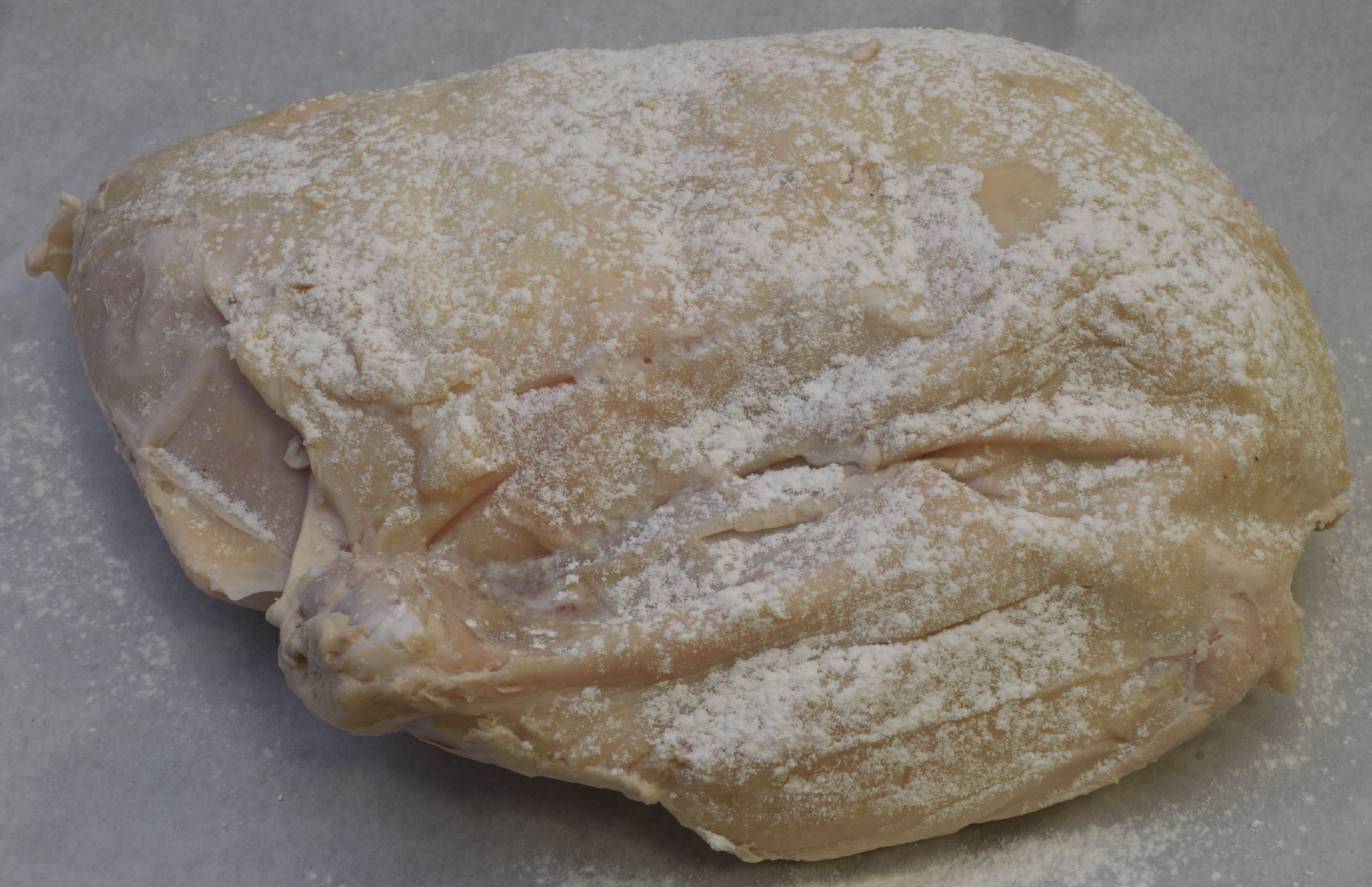 Dust lightly with flour (optional).
Dust lightly with flour (optional). 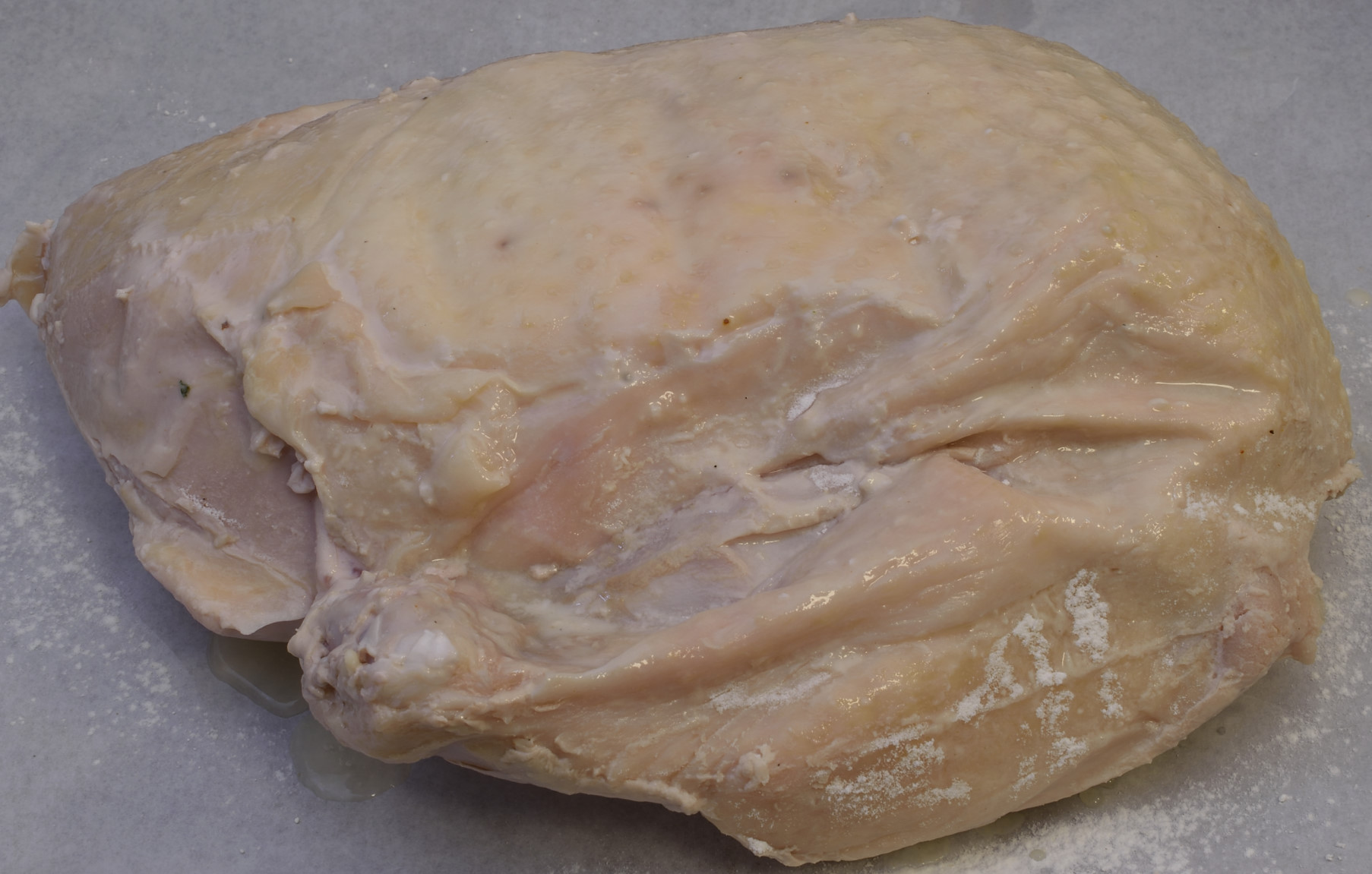 Moisten the surface with the egg white solution.
Moisten the surface with the egg white solution. 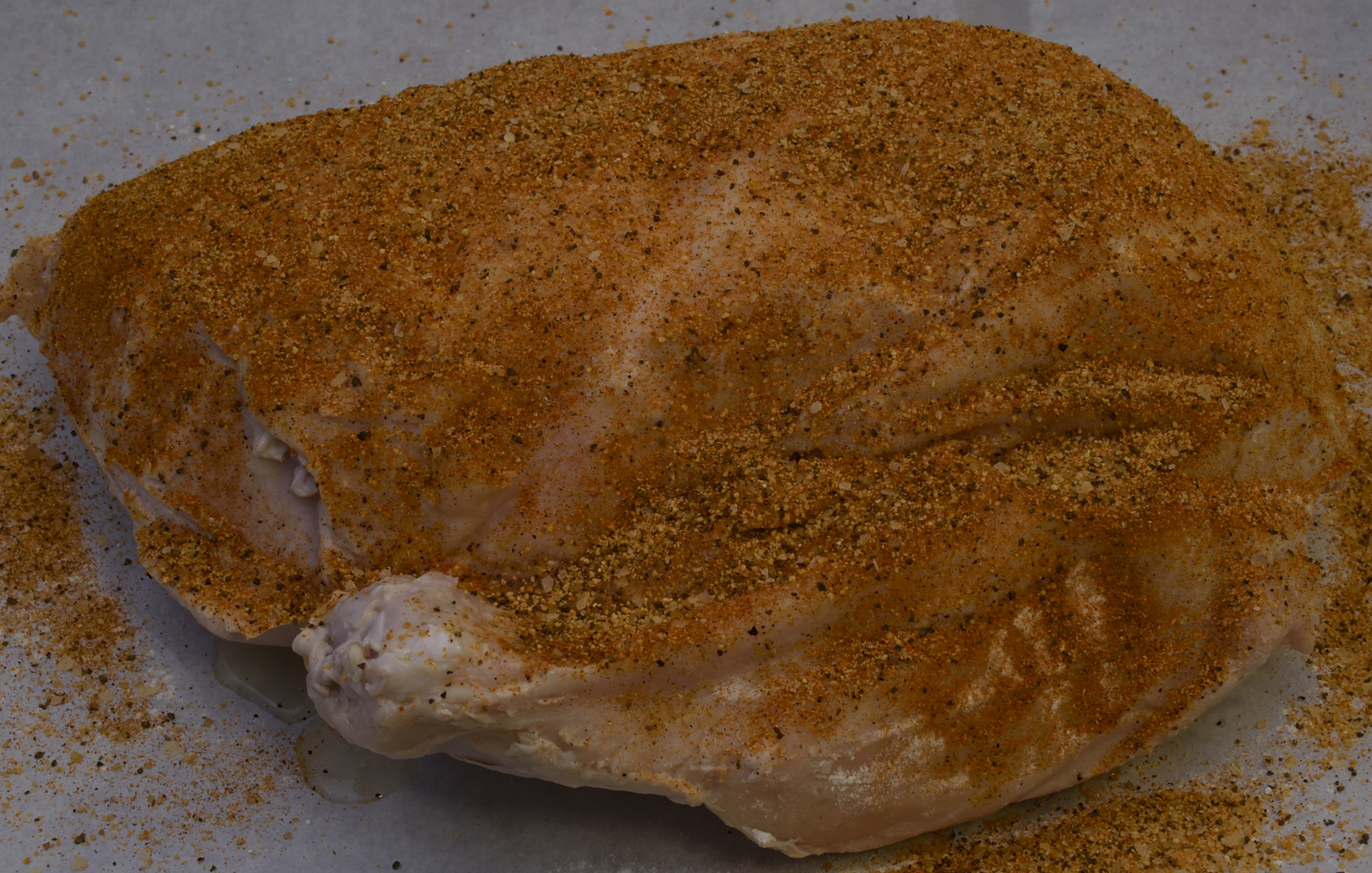 Sprinkle generously with the rub/seasonings.
Sprinkle generously with the rub/seasonings. 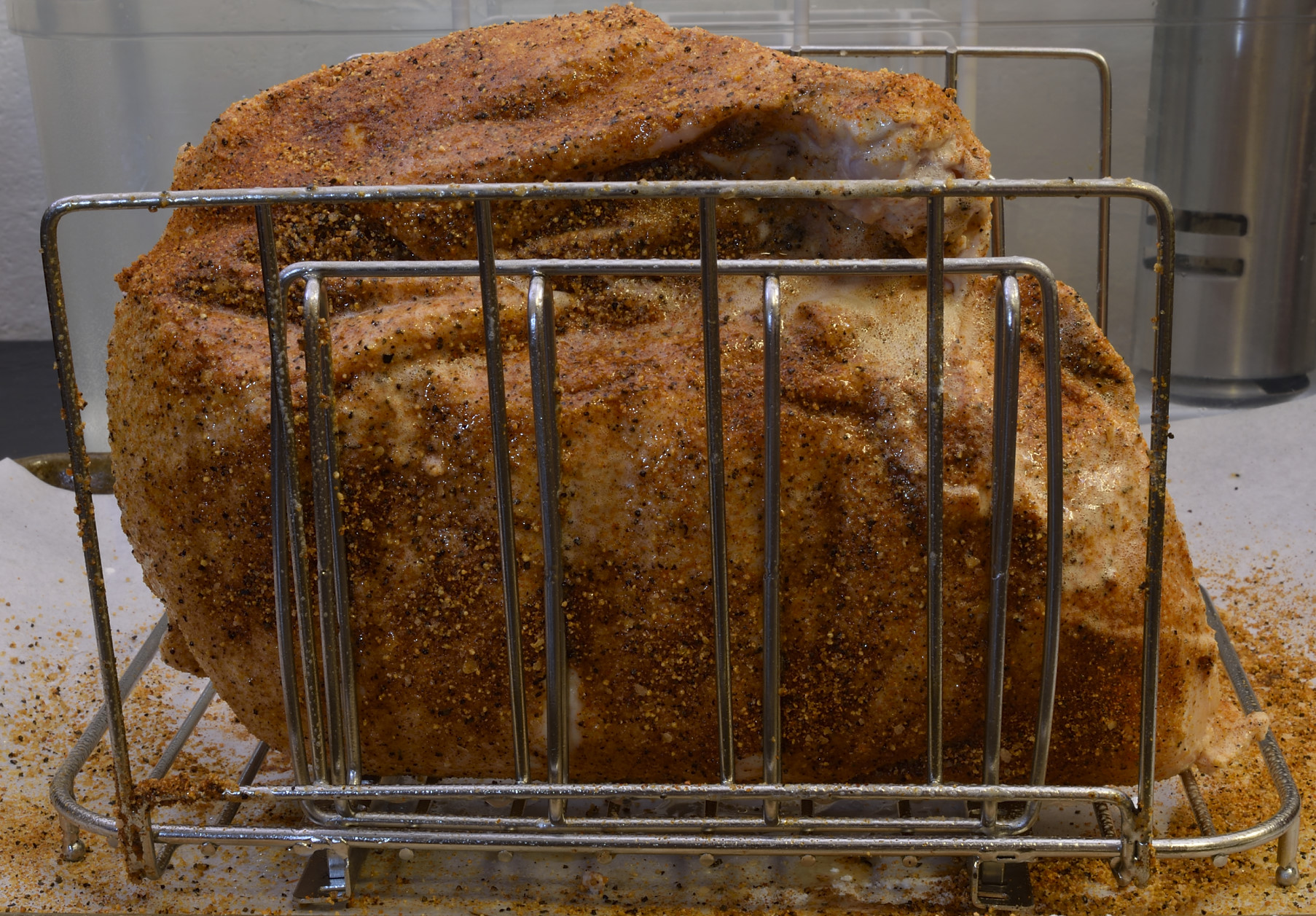 Stage the breast upright into the rack.
Stage the breast upright into the rack. 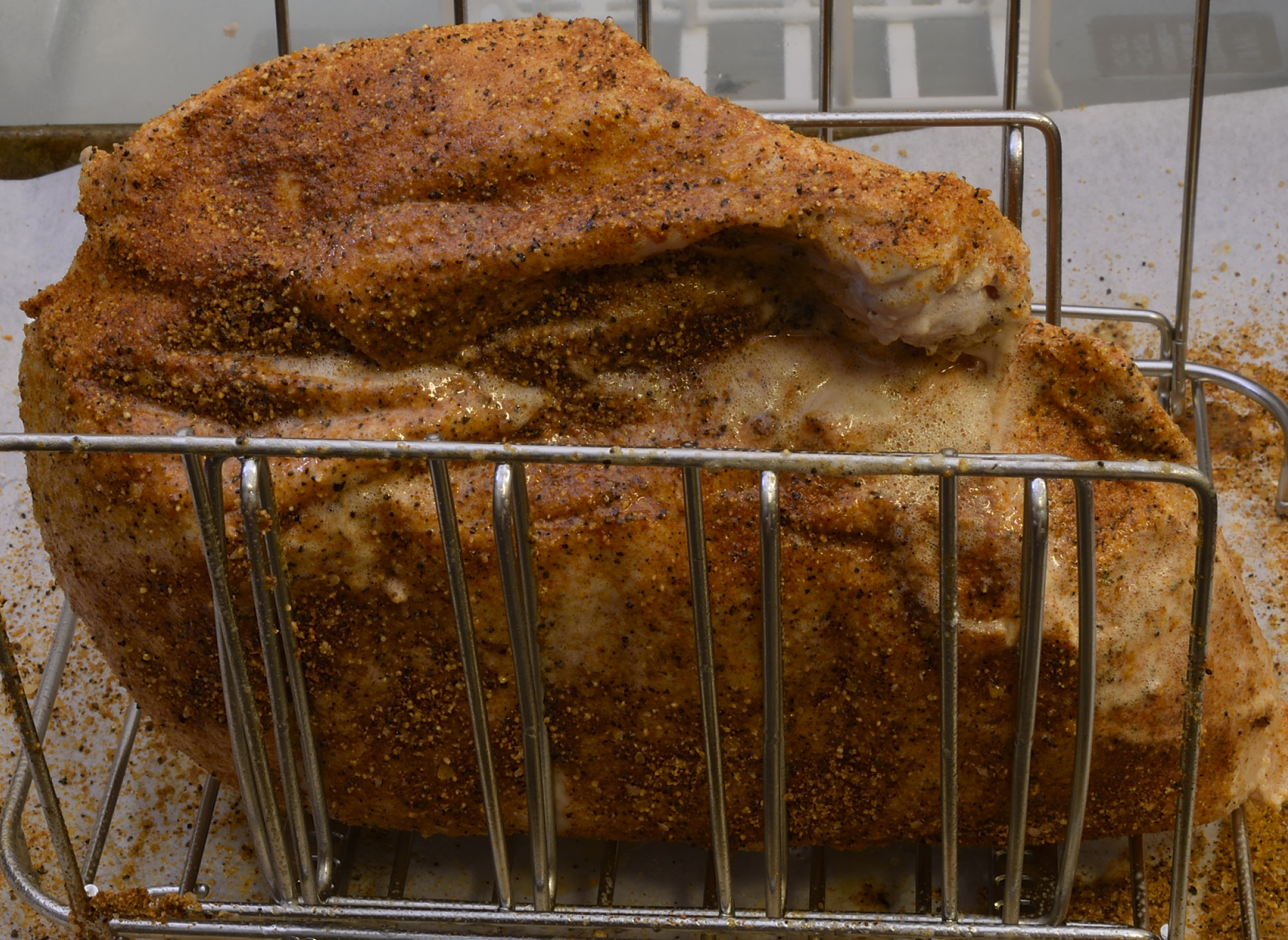 Carefully tilt the rack forward until it rests on its side. Apply the flour, egg white solution and seasoning on to the other side (optional). Drizzle or spray with a fine coating of oil. Transport the turkey (in the rack) into the smoker (or oven). Smoke for 3-4 hours until a minimal internal temperature of 125 F/52 C is achieved.
Carefully tilt the rack forward until it rests on its side. Apply the flour, egg white solution and seasoning on to the other side (optional). Drizzle or spray with a fine coating of oil. Transport the turkey (in the rack) into the smoker (or oven). Smoke for 3-4 hours until a minimal internal temperature of 125 F/52 C is achieved. 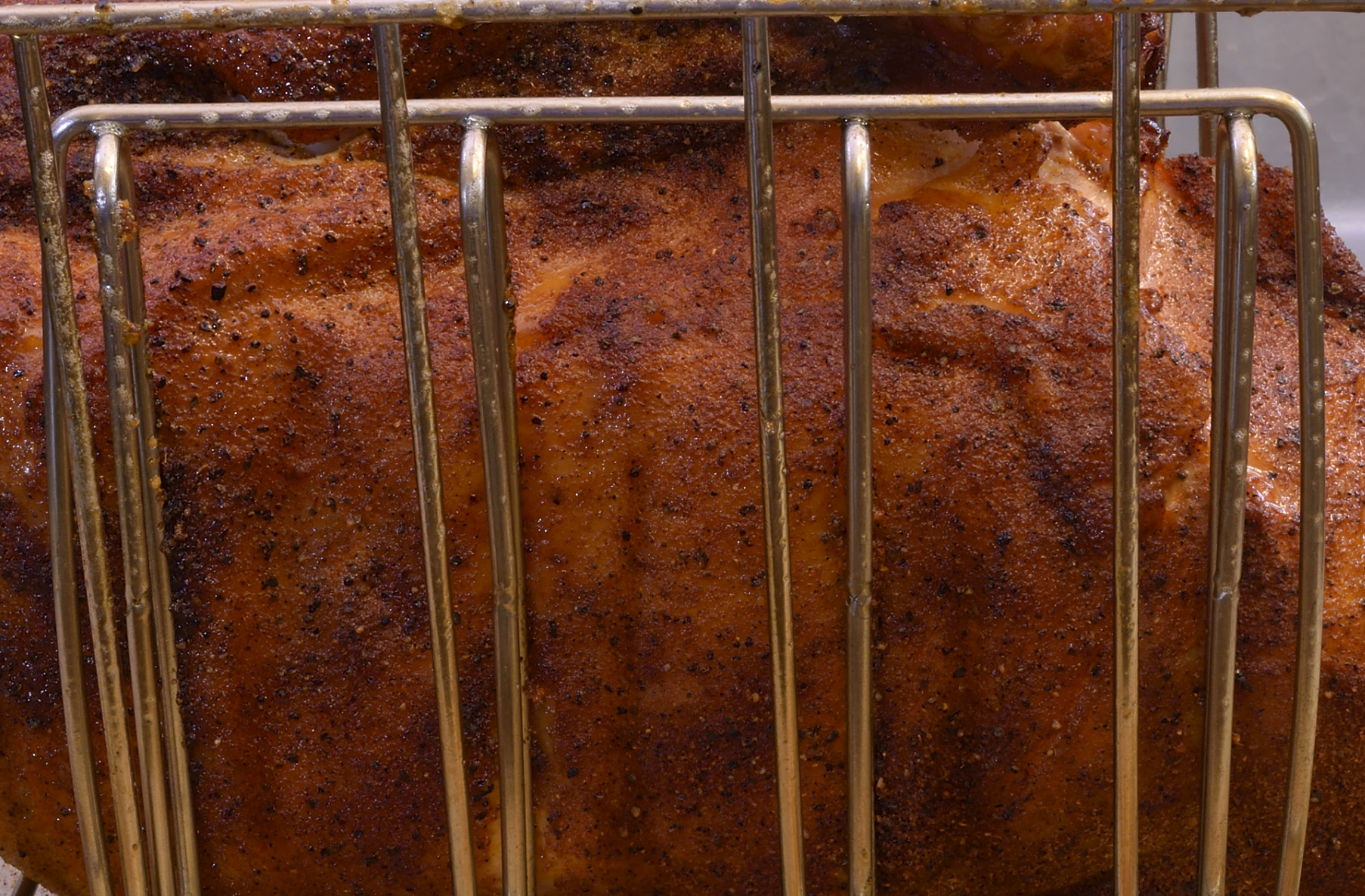 Since the turkey is already pasteurized safe, the practitioner has the freedom of mostly concerning his or herself with achieving the desired appearance. 125 F/53 C is generally considered to be "mouth hot."
Since the turkey is already pasteurized safe, the practitioner has the freedom of mostly concerning his or herself with achieving the desired appearance. 125 F/53 C is generally considered to be "mouth hot." 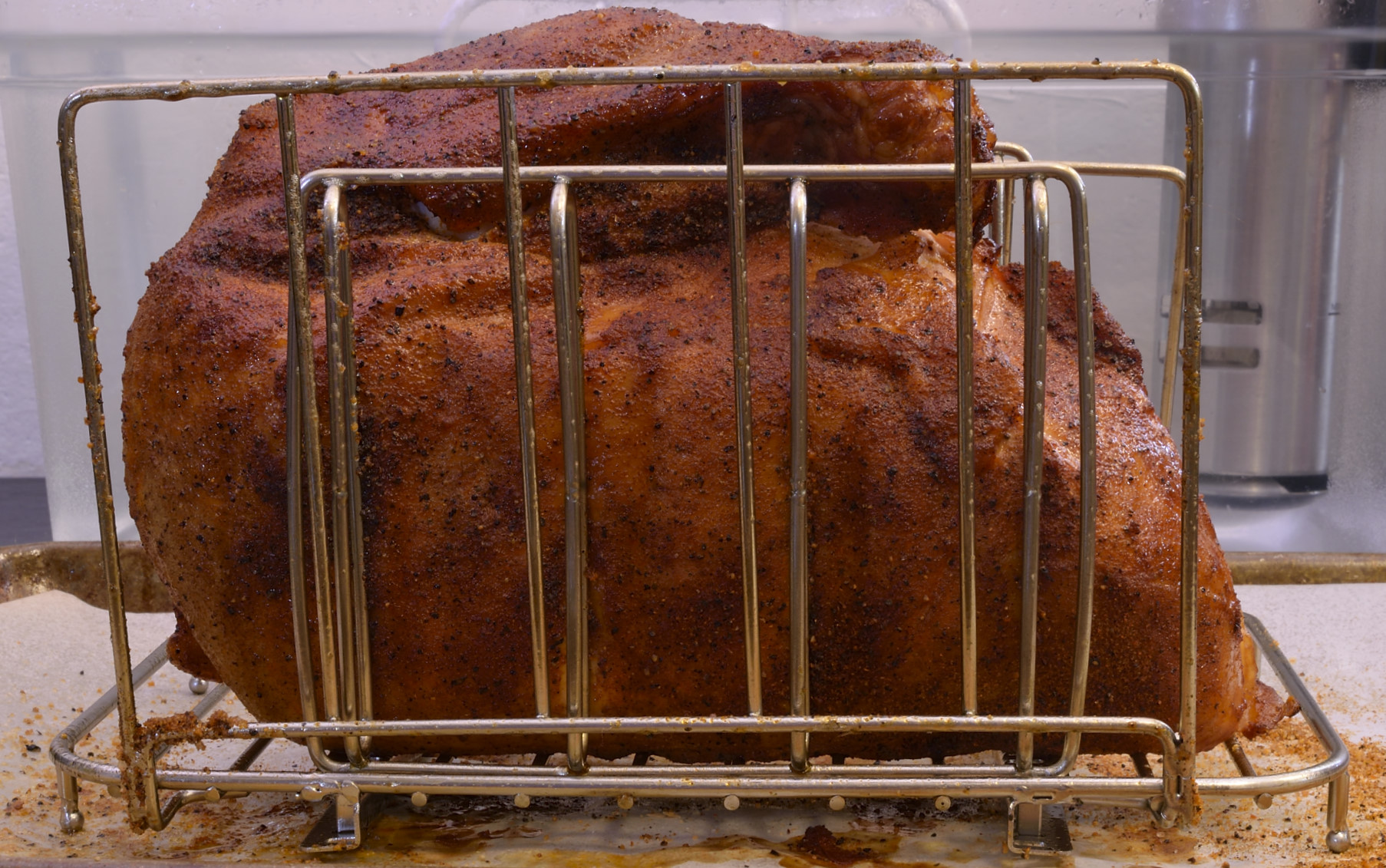 Lower temperatures (180 F-225 F) impart more smoke flavor than higher temperatures. Higher temperatures will create a crisper skin. There is a synergistic solution.
Lower temperatures (180 F-225 F) impart more smoke flavor than higher temperatures. Higher temperatures will create a crisper skin. There is a synergistic solution. 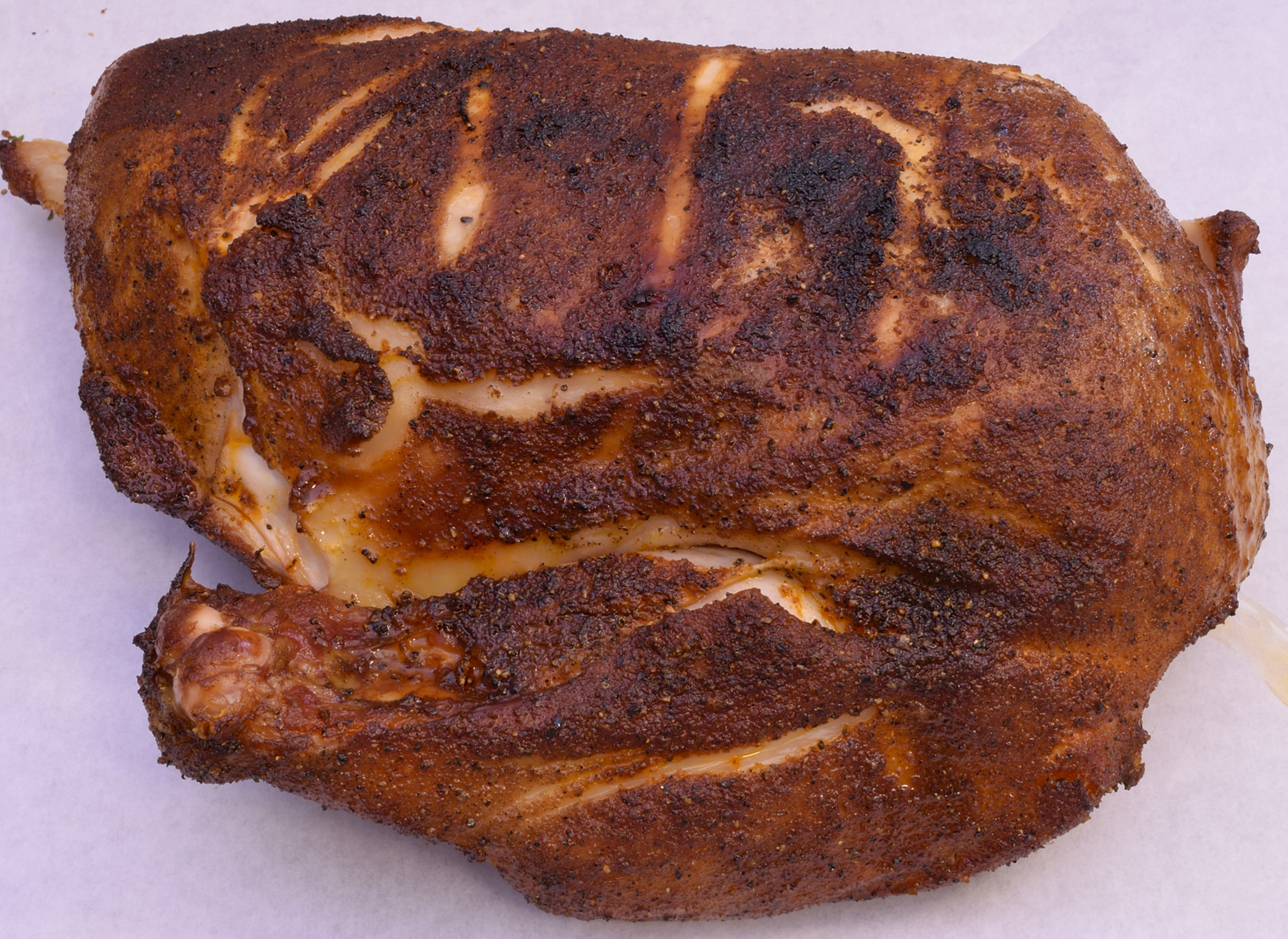 After smoking, the skin side of the turkey can be "crisped" by using a kitchen oven preheated on the "broil" function. Care must be taken not to scorch. From a pitmaster's view point, the benefit is minimal.
After smoking, the skin side of the turkey can be "crisped" by using a kitchen oven preheated on the "broil" function. Care must be taken not to scorch. From a pitmaster's view point, the benefit is minimal. 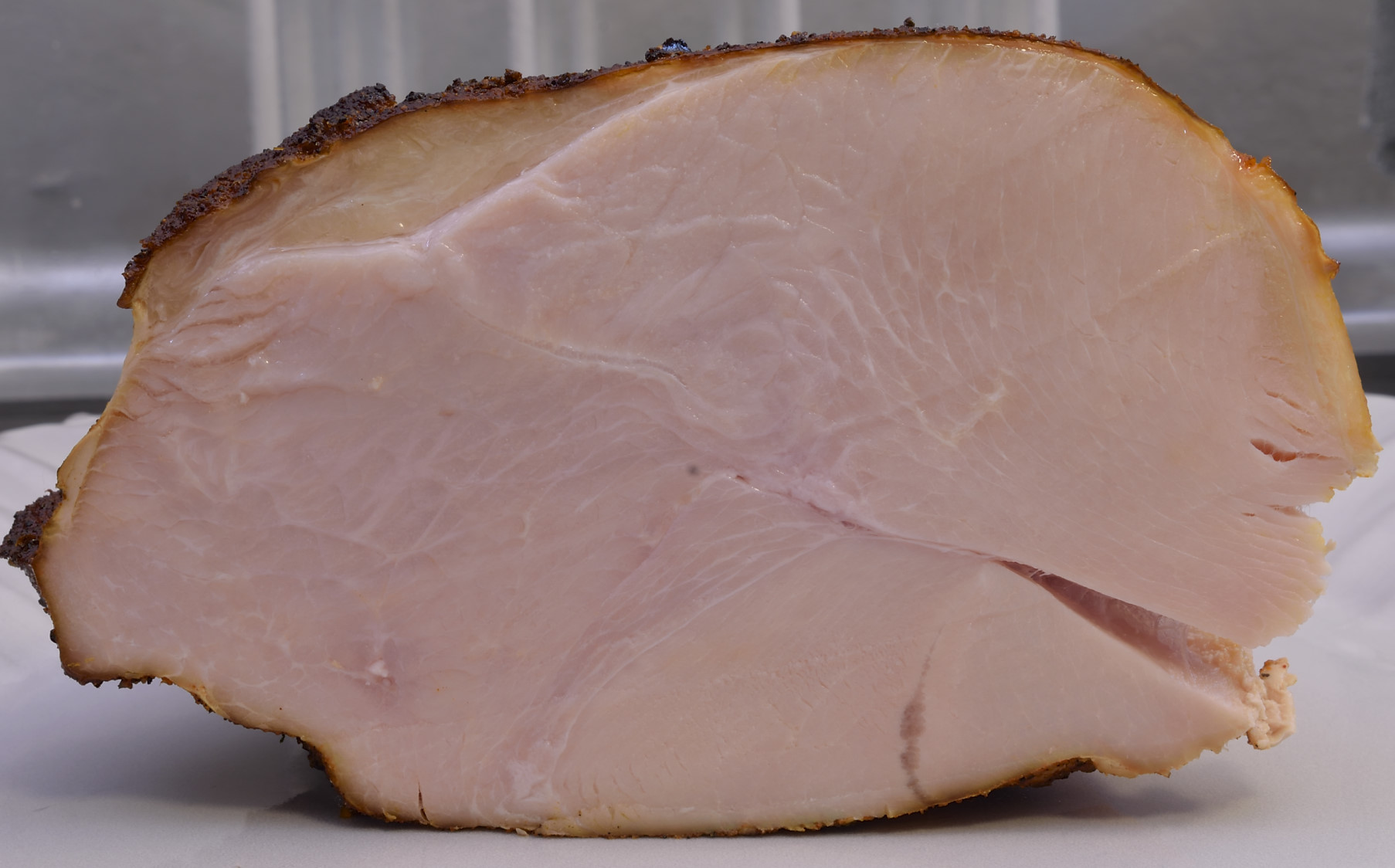 While many home smoked foods can take on a very dark appearance, the incorporation of a certain amount of steam in "low and slow" cooking trades crispness for "juiciness."
While many home smoked foods can take on a very dark appearance, the incorporation of a certain amount of steam in "low and slow" cooking trades crispness for "juiciness."  Ultimately, the choice is left up to the enthusiast.
Ultimately, the choice is left up to the enthusiast. Scheduling service
Sous vide processing, pasteurization and preservation can be done long in advance when the intention is to shock cold and refrigerate until the day of service. Home BBQ aficionados always aspire that the food be ready at the same exact moment as the guests. This ideal is fraught with challenge. Sous vide makes this burdensome task almost "beer proof." If you are not ready to serve at that precise instant when your turkey comes out of the smoker, you need no longer fear the swift onset of cold and/or dried out meat. The smoked turkey can be re-vacuumed and held at 128 F/53 C for up to four hours (or even longer) if that is necessary.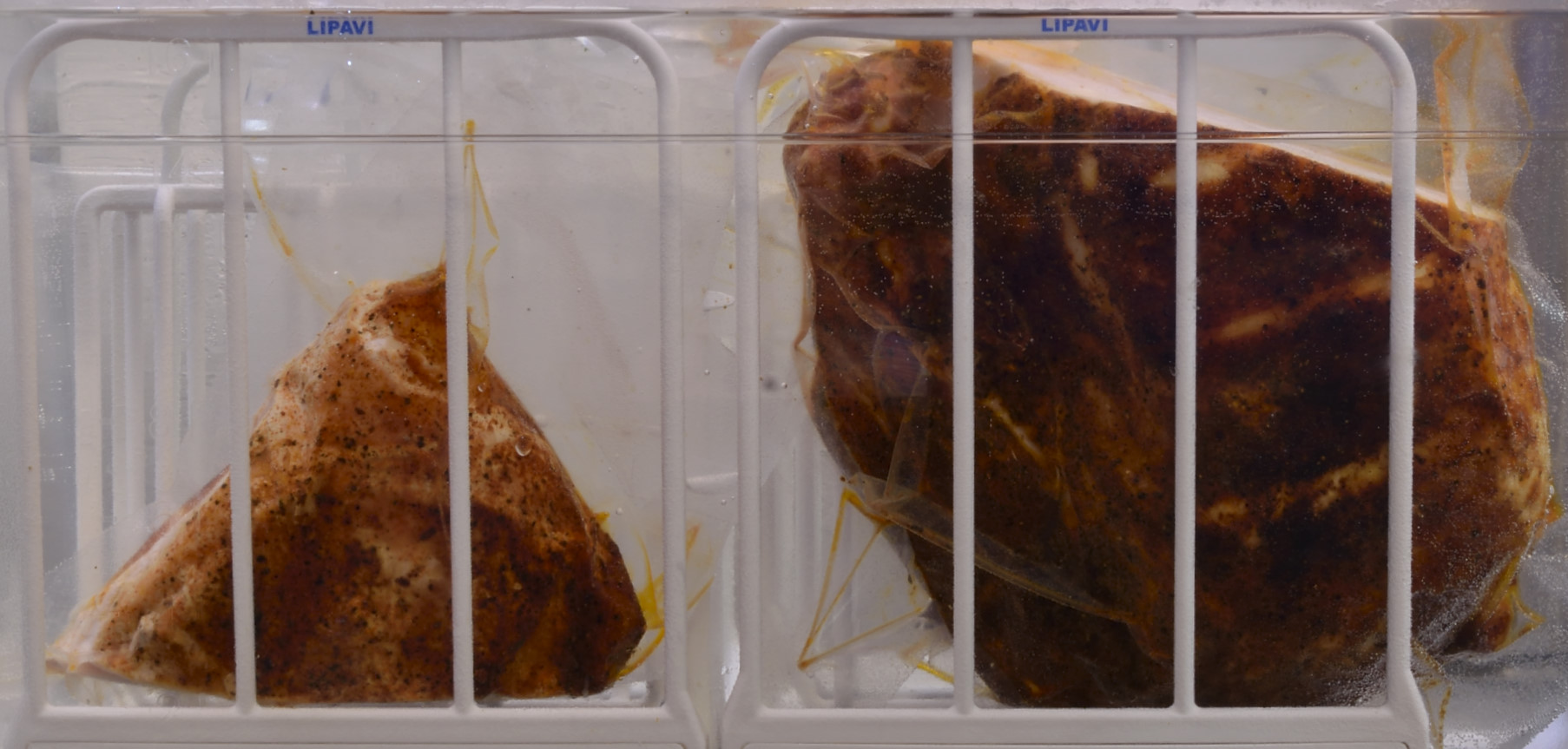 Although it is difficult to stop moisture loss entirely, at this low temperature it slows to a virtual crawl. Whatever moisture is ultimately released by the roast can be harvested from the bag and utilized. In traditional holding models, this is almost always lost to evaporation.
Although it is difficult to stop moisture loss entirely, at this low temperature it slows to a virtual crawl. Whatever moisture is ultimately released by the roast can be harvested from the bag and utilized. In traditional holding models, this is almost always lost to evaporation. 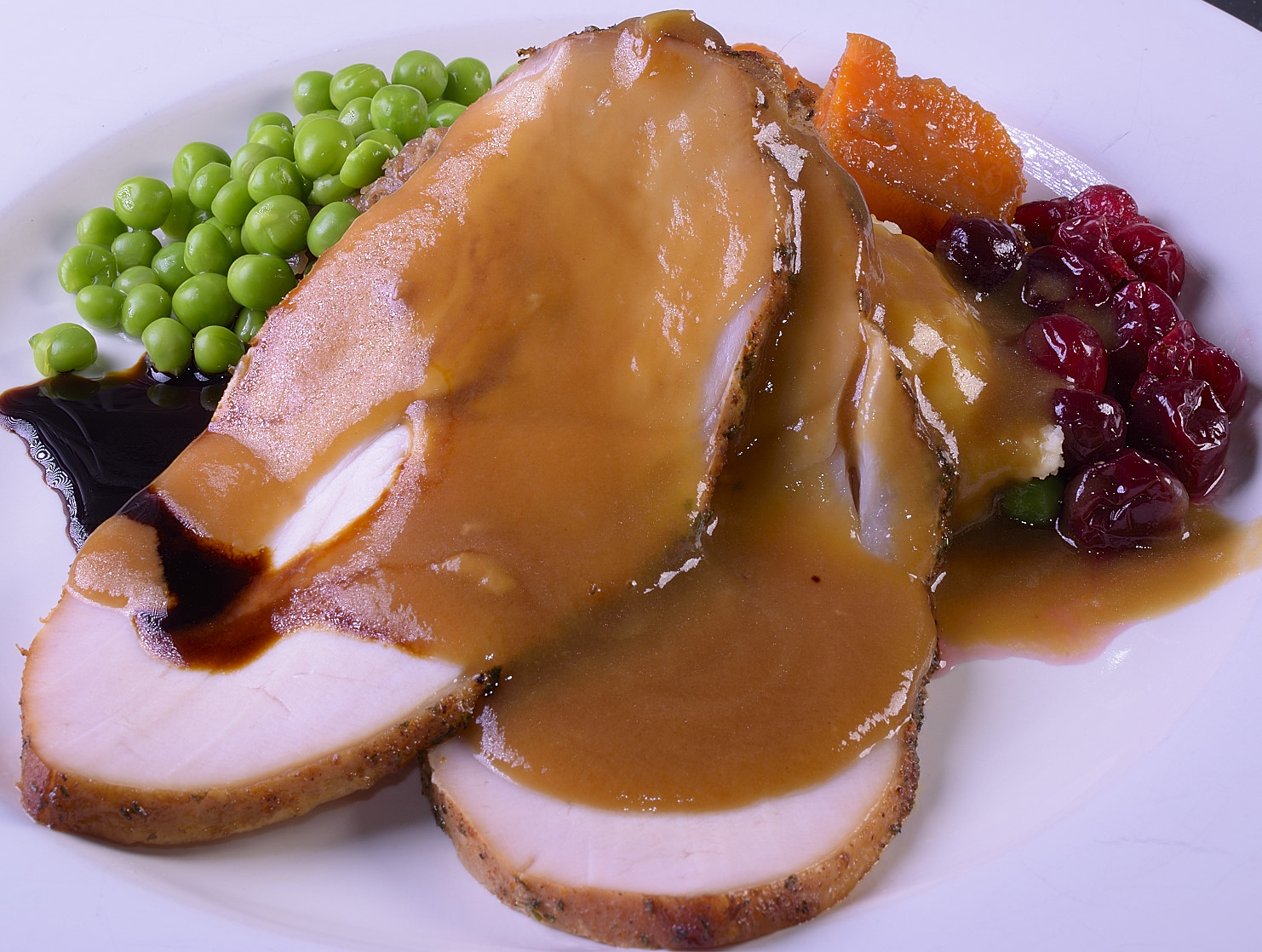
Cold Service
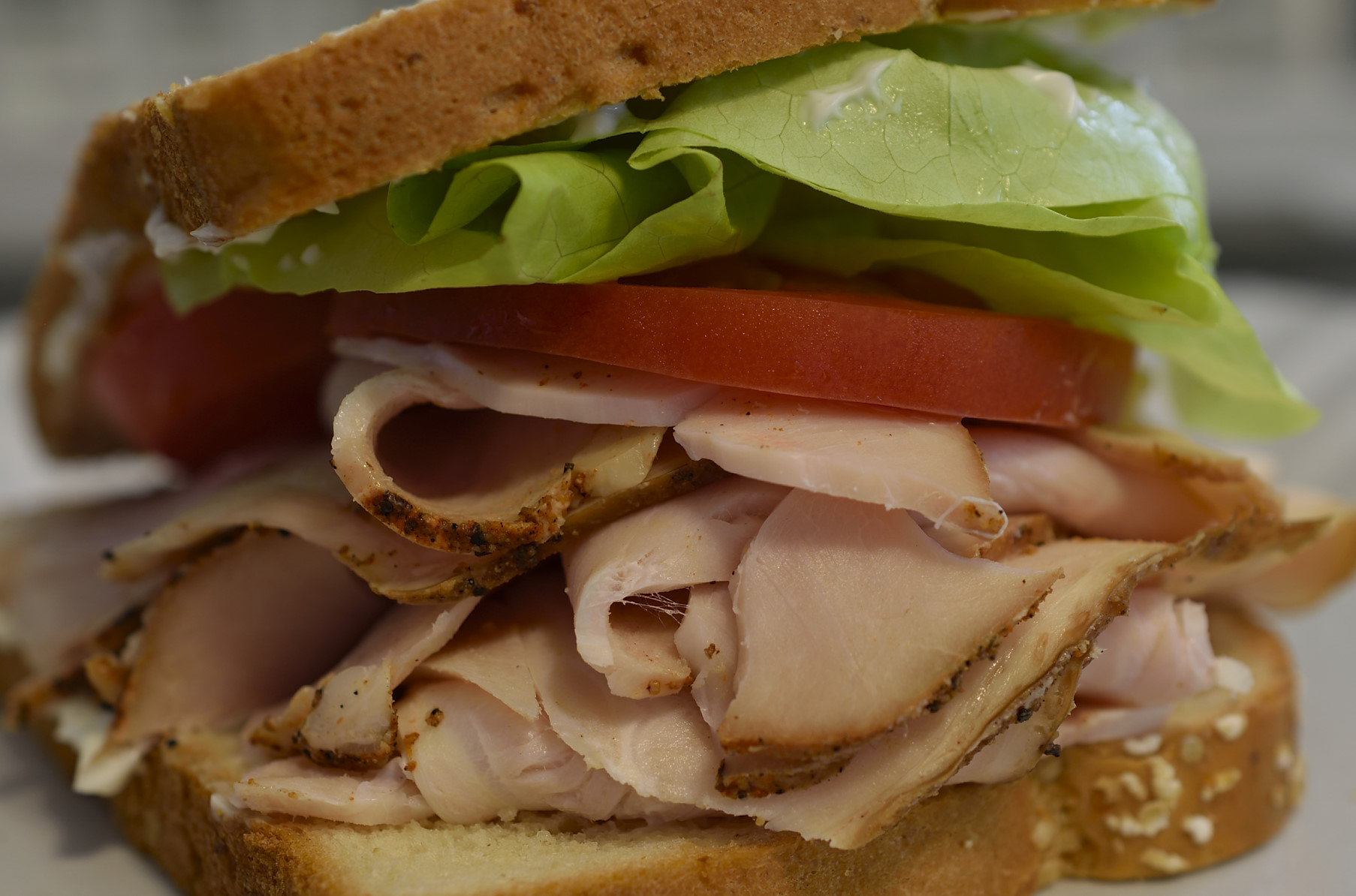 Sliced thin, the turkey can be incorporated into the ever growing list of popular sandwiches and wraps. This can be done before or after the searing process, as is your preference. Although the deli versions of sous vide turkey usually include the un-seared skin, it is easily peeled off before slicing as preferred.
Sliced thin, the turkey can be incorporated into the ever growing list of popular sandwiches and wraps. This can be done before or after the searing process, as is your preference. Although the deli versions of sous vide turkey usually include the un-seared skin, it is easily peeled off before slicing as preferred. 